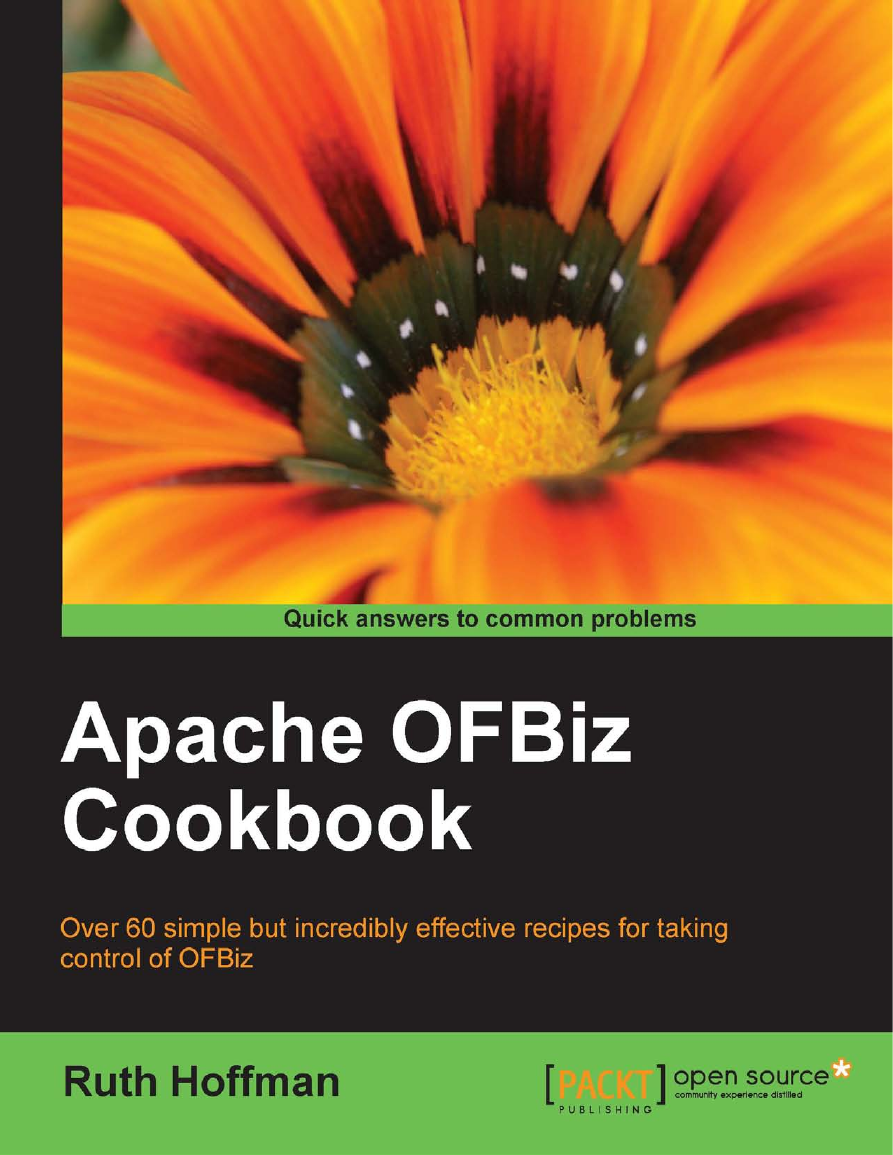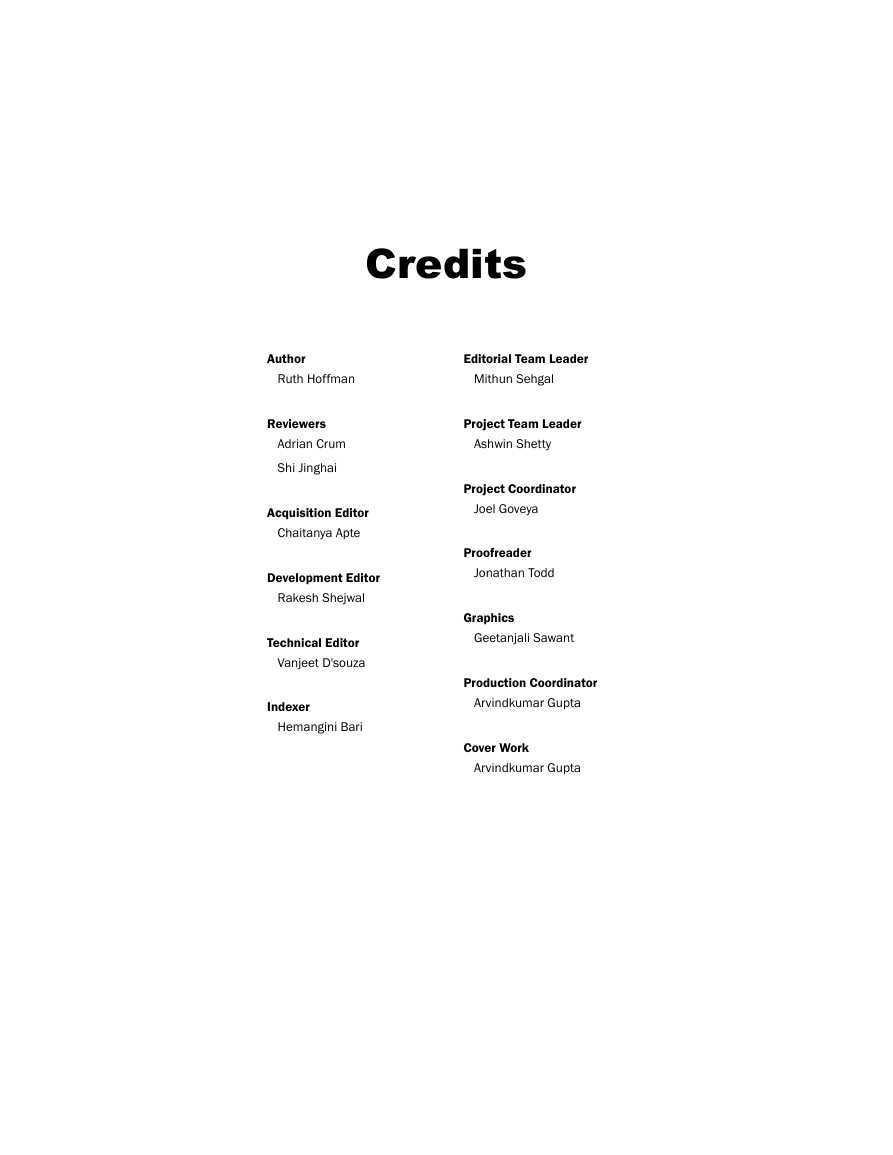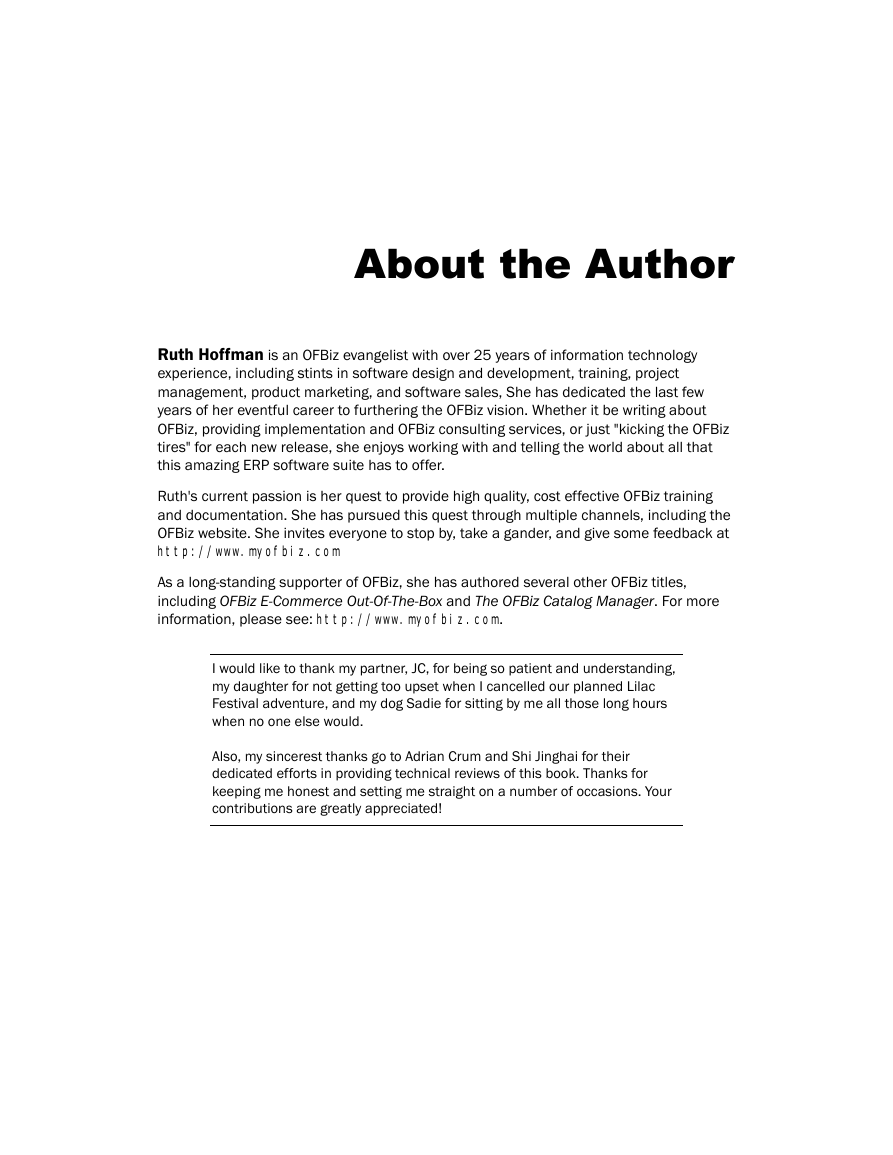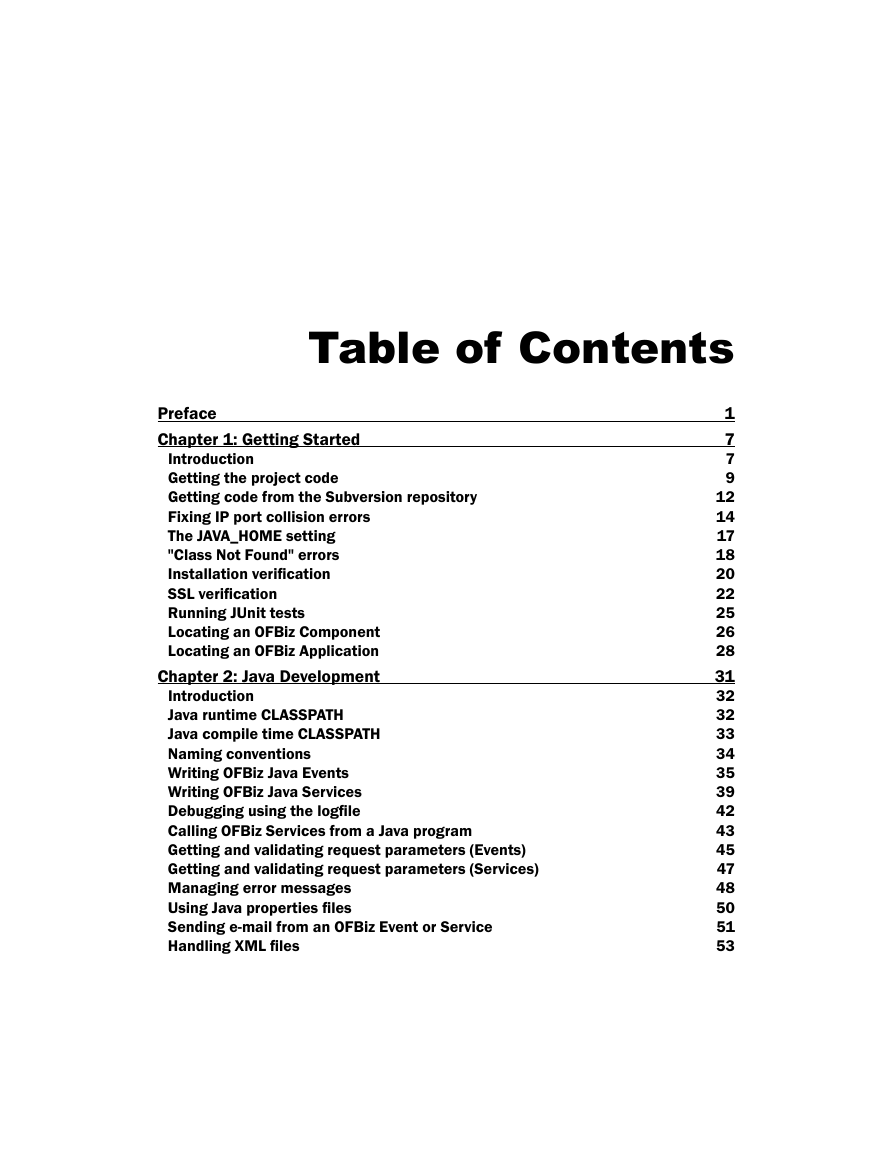Cover
Copyright
Credits
About the Author
About the Reviewers
Table of Contents
Preface
Chapter 1:
Getting Started
Introduction
Getting the project code
Getting code from the Subversion repository
Fixing IP port collision errors
The JAVA_HOME setting
"Class Not Found" errors
Installation verification
SSL verification
Running JUnit tests
Locating a OFBiz Component
Locating an OFBiz Application
Chapter 2:
Java Development
Introduction
Java runtime CLASSPATH
Java compile time CLASSPATH
Naming conventions
Writing OFBiz Java Events
Writing OFBiz Java Services
Debugging using the logfile
Calling OFBiz Services from a Java program
Getting and validating request parameters (Events)
Getting and validating request parameters (Services)
Managing error messages
Using Java properties files
Sending e-mail from an OFBiz Event or Service
Handling XML files
Chapter 3:
The User Interface
Introduction
Creating HTML web pages
Adding actions to Screen widgets
HTML markup in Screen widgets
CSS styling in Screen widgets
Platform-specific widgets
OFBiz Tree widgets
OFBiz Menu widgets
OFBiz Form widgets
Creating web pages using FreeMarker
Passing Screen widget parameters to FreeMarker
Calling Java methods from FreeMarker
Forcing FreeMarker to render HTML markup
Uploading files in FreeMarker forms
Chapter 4:
OFBiz Services
Introduction
Managing existing OFBiz Services
Calling a Service from an HTML form
Calling asynchronous Services from
HTML forms
Calling a Service many times from an HTML form
Creating a new Service definition file
Creating a new Service definition
Implementing Services
Defining Service attributes (INPUT/OUTPUT)
Service Event Condition Actions
Service groups
Handling Service errors
Writing Groovy Services
Mail Event Condition Actions
Entity Event Condition Actions
Chapter 5:
The OFBiz Entity Engine
Introduction
Changing the default database
Connecting to a remote database
Connecting to multiple databases
Creating entity groups
Disabling automatic database checks
Mapping database data types
Creating a new entity model
Modifying an existing entity model
Building a view-entity
Chapter 6:
OFBiz Security
Introduction
Securing communications ports
Disabling demonstration user accounts
Protecting OFBiz web pages
Creating user accounts
Protecting applications using security groups
Protecting views ("Tarpitting")
Retrieving forgotten passwords
Changing your password
Adding or changing SSL certificates
OFBiz single sign-on and the external login key
Chapter 7:
WebTools
Introduction
Cache maintenance
Changing debug settings
Exporting database data to XML documents
Loading database(s) from XML documents
Managing internationalization labels
Using the SQL processor
Exploring the entity reference tool
Viewing OFBiz usage statistics
Uncovering artifact information
Working with temporal expressions
Chapter 8:
Web Services
Introduction
Requesting web services using URL parameters
Requesting web services using an HttpClient
Creating HttpClients and passing XML documents
Creating XML-RPC web service clients
Becoming an XML-RPC web service provider
OFBiz SOAP messaging clients
Generating a WSDL document
Creating SOAP-compliant web services
Chapter 9:
OFBiz Tips and Tricks
Introduction
Fixing Java memory allocation errors
Reloading OFBiz seed and demo data
Creating new seed data files
Changing the administrative user's password
Creating a new administrative user
Getting the OFBiz version number
Building an OFBiz instance
Building a single OFBiz Component
Creating a new OFBiz Component or Application
Creating a FreeMarker transform
Preparing data using Groovy
Pop-up new browser windows
Installing an OFBiz Visual Theme
Creating an OFBiz Visual Theme
Appendix:
Entity Engine by Example
Introduction
Putting it all together with a data model example
Reading data from an OFBiz data source
Working with large result sets (EntityListIterator)
Removing data from the database (Java)
Writing data to the database (Java)
Using the automatic sequence generator
EntityUtil
EntityOperator reference
Index
















 2023年江西萍乡中考道德与法治真题及答案.doc
2023年江西萍乡中考道德与法治真题及答案.doc 2012年重庆南川中考生物真题及答案.doc
2012年重庆南川中考生物真题及答案.doc 2013年江西师范大学地理学综合及文艺理论基础考研真题.doc
2013年江西师范大学地理学综合及文艺理论基础考研真题.doc 2020年四川甘孜小升初语文真题及答案I卷.doc
2020年四川甘孜小升初语文真题及答案I卷.doc 2020年注册岩土工程师专业基础考试真题及答案.doc
2020年注册岩土工程师专业基础考试真题及答案.doc 2023-2024学年福建省厦门市九年级上学期数学月考试题及答案.doc
2023-2024学年福建省厦门市九年级上学期数学月考试题及答案.doc 2021-2022学年辽宁省沈阳市大东区九年级上学期语文期末试题及答案.doc
2021-2022学年辽宁省沈阳市大东区九年级上学期语文期末试题及答案.doc 2022-2023学年北京东城区初三第一学期物理期末试卷及答案.doc
2022-2023学年北京东城区初三第一学期物理期末试卷及答案.doc 2018上半年江西教师资格初中地理学科知识与教学能力真题及答案.doc
2018上半年江西教师资格初中地理学科知识与教学能力真题及答案.doc 2012年河北国家公务员申论考试真题及答案-省级.doc
2012年河北国家公务员申论考试真题及答案-省级.doc 2020-2021学年江苏省扬州市江都区邵樊片九年级上学期数学第一次质量检测试题及答案.doc
2020-2021学年江苏省扬州市江都区邵樊片九年级上学期数学第一次质量检测试题及答案.doc 2022下半年黑龙江教师资格证中学综合素质真题及答案.doc
2022下半年黑龙江教师资格证中学综合素质真题及答案.doc